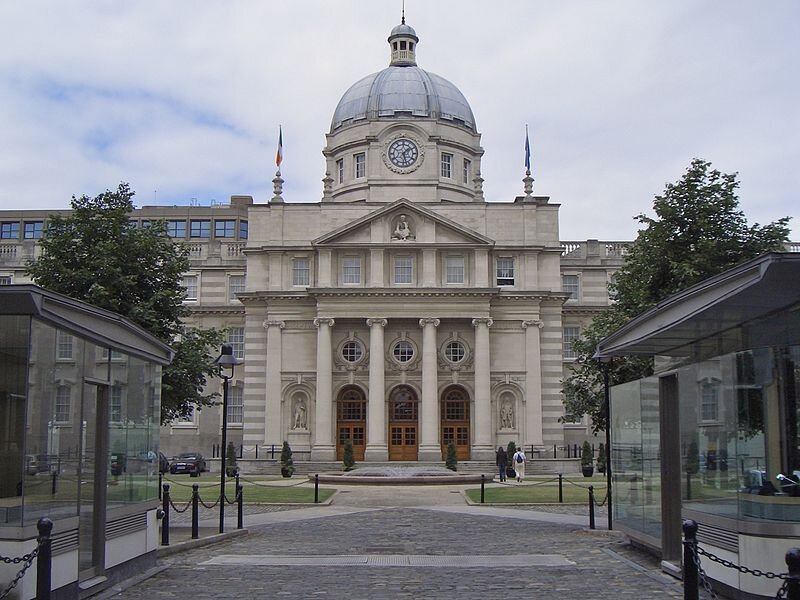New Optimism For Brexit Deal After Talks
The Government Buildings in Dublin, Ireland. (Wikimedia Commons)
As the October 31 deadline for Britain to withdraw from the European Union with a separation agreement looms, British Prime Minister Boris Johnson and Irish Taoiseach Leo Varadkar, the head of Ireland’s government, seemed upbeat about the possibility of reaching a deal. The two met on October 11 in Cheshire, England, and had a “detailed and constructive discussion,” in which they agreed that they “could see a pathway to a possible deal.”
After the meeting, Varadkar told reporters that the Brexit situation was “very positive and very promising” and that he was “now absolutely convinced that both Ireland and the U.K. want there to be an agreement that’s in the interests of Ireland and the U.K., and the EU as a whole.”
The positive showing came on the back of a period of criticism for Britain’s stance, with EU leaders calling for the country to show a firmer and more serious stance towards the issue. Varadkar himself commented that it would be “very difficult” to reach a deal over the course of the upcoming week, two days before his meeting with Johnson.
The effects of the positive sentiment were clearly felt financially in Britain, as the pound’s value increased by 1.91 percent against the dollar, rising to almost $1.24 in the biggest single-day jump since March 13 of this year. The upbeat tone of the meeting was a major topic in the British papers the next day.
The situation regarding Northern Ireland and the Republic of Ireland was the main point of contention that prevented reaching a deal. A backstop was proposed to avoid trade restrictions between the two islands in the form of checkpoints, meaning that Northern Ireland would remain under the customs agreement of the EU, unlike the rest of the country, which would have its own customs policies.
Northern Ireland’s Democratic Unionist (DUP) politicians rallied against the backstop plans since they claimed that it would separate Northern Ireland from the rest of the U.K. Johnson himself has not supported Northern Ireland’s stance in the past, with his latest public position being a temporary backstop with the entirety of the U.K. eventually leaving the customs agreement of the EU. Meanwhile, Varadkar has been supportive of the backstop idea, and reiterated after his meeting with Johnson that he wants to make sure,“that there is no customs border between the North and the South.”
Although the details of the meeting are unclear, Forbes and the Irish Timesreported that despite his staunch opposition to it, Johnson agreed to the Northern Ireland backstop, making the Irish Sea the border between the U.K. and the EU unless a Northern Irish referendum or the Stormont Assembly, Northern Ireland’s legislature, say otherwise. This could also signal heavy backlash from the DUP, the main campaigners against the backstop. Nevertheless, the alleged resolution of the Northern Ireland border situation is a major breakthrough in Brexit talks, and more can be expected soon after the positive meeting.

